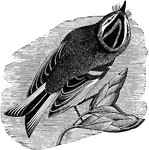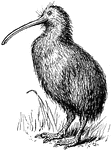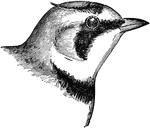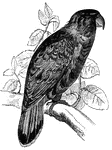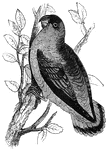128 illustrations of birds including: jacamar, jacana, jackdaw, jarbiru, jay, kestrel, king bird, kingfisher, kinglet, kite, kiwi, kohlmeise, kookaburra, lammergeier, land-rail, lapwing, lark, linnet, loon, lory, love bird, and lyre bird
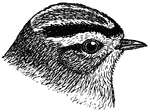
Golden-crowned Kinglet
The Golden-crowned Kinglet, Regulus satrapa, is a very small songbird. Adults are olive-gray on the…

Kirombo
"Leptosoma discolor, the Kiromobo or Vorondreo of Madagascar, and the Comoro Islands, which has a big…
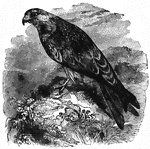
Kite
"Genus Milvus, its length is twenty-six inches; it's color above dark brown; rufous bown below;…
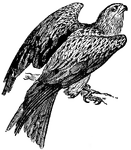
European Kite
European Kites are very miscellaneous feeders, but depend largely on offal, and in the eastern tropics…

Fork-Tailed Kite
"The fork-tailed kite, (N. furcatus) is twenty-five inches long; the wings and tail black;…
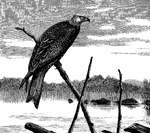
Red Kite Resting on a Branch by a Body of Water
"Milvus milvus, the Red Kite or Forked Tail Glead of the Old World, ranging from the Atlantic Islands-except,…

Snail Kite on Branch
A Snail Kite (Rostrhamus sociabilis) is a bird of prey native to Florida in the Accipitridae family…
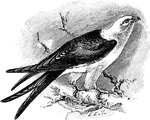
Swallow-Tailed Kite
The Swallow-Tailed Kite (Elanoides forficatus) is a large bird of the Accipitridae family of birds of…
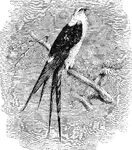
Swallow-tailed Kite
"Elanoides forficatus. Swallow-tailed Kite. Adult: Head, neck, band on rump, and entire under parts,…
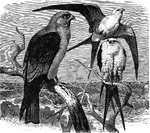
Two Swallow-tail and One Mississippi Kites
Two Swallow-tail and One Mississippi Kite. "Ictinia subcaerulea. Mississippi Kite. General plumage plumbeous…

Kittiwake
"It is called the Laughing Gull on account of its cry; it is most easily tamed. The Kittiwake is often…

Kiwi
The Kiwi, a native of New Zealand is closely related to the Ostrich but much smaller. It is also a flightless…
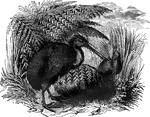
Kiwi
Also known as the apteryx, the kiwi bird posses a long, slender bill, which it uses for feeding on insects…

Kiwi
Kiwi, Apteryx australis, of the South Island, is lighter (than the Apteryx mantelli of North Island),…

Kiwi
The Kiwi, a native of New Zealand is closely related to the Ostrich but much smaller. It is also a flightless…
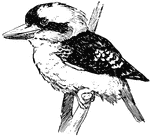
Kookaburra
"He is a kingfisher, with a head as big as his body but a voice that is many times bigger than both…
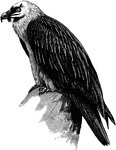
L&emumlmmergeier
"Gypaëtus barbatus, the magnificent L&emumlmmergeier, is greyish-black with white streaks, and has…

Lammergeier
The largest bird of prey native to Europe. Found in the lofty mountains of southern Eurasia and northern…

Lammergeyer
The lammergeyer (Swiss for "lamb-killer") is a member of the vulture family, but has a notably feathered…

Land-Rail
The Crex pratensis, Land-Rail, or Cork Crake, is mostly brown with the upper parts spotted, a blue-green…

Lapwing
Lapwings may often be seen settling in fields recently ploughed, where they can find an ample supply…
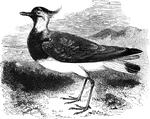
Lapwing
Also known as the peewit, the lapwing is distributed through Europe, as well as some parts of Asia and…

Lapwing
A genus of birds of the plover family, native to Eurasia, Africa, and Iceland. They are about the size…

Lapwing
"The lapwing is a most useful bird to man; it destroys a prodigious quantity of worms, caterpillars…
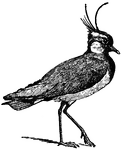
Lapwing (or Peewit)
A handsome plover-like bird of Northern Europe and Asia (Vanellus cristatus), also known in Great Britain…
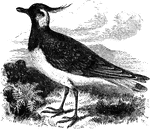
European Lapwing
"The glareoles (Glareolidae) are a remarkable Old World form, like long-legged swallows, wth a cuckoo's…

Northern Lapwing
"The Lapwing with one wing fully extended, and forming a long lever; the other being in a flexed condition…
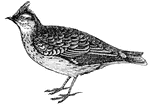
Lark
The lark is the living emblem of happy, peaceful labour, the songster of the cultivated earth, (Figuier,…
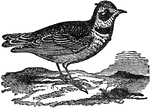
Lark
A genus of common birds of song, resembling the finches in many respects. There are many species, various…
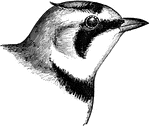
Shore Lark
"Shore Lark or Horned Lark. Upper parts in general pinkish-brown, this pinkish or vinaceous or liliaceous…
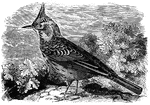
Crested Lark
Feeding mostly on worms and grain, the crested lark frequents Northern Europe i nthe summer, and Southern…

Shore Lark
Found in the north of Europe and Asia, specimens of the shore-lark have been ound as far south as France…

Shore Lark
The Shore or Horned Lark (Eremophila alpestris) is a bird in the Alaudidae family of larks.

Shore Lark
"Shore Lark or Horned Lark. Upper parts in general pinkish-brown, this pinkish or vinaceous or liliaceous…
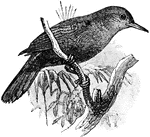
Black-Tailed Leaftosser
The Black-Tailed Leaftosser (Sclerurus caudacutus) is a small bird in the Furnariidae family of Ovenbirds.

Limpkin
The Limpkin (Aramus guarauna) is a bird in the Aramidae family that is found in the Caribbean, Central…

Common Linnet of Europe
The common linnet of Europe is a small, active bird that feeds primarily on seeds.
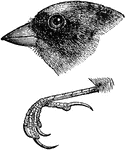
Red-poll Linnets
"Bill small, short, straight, very acute, more or less compressed, the lateral outlines usually a little…

Archaeopteryx Lithographica
"Archaeornithes is at present represented by but one member, the first undoubted fossil Bird, made known…
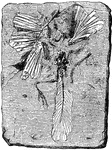
Archaeopteryx Lithographica
"Oldest known ornithological treatise, illustrating also the art of lithography in the Jurassic period,…

Black-breasted Longspur
"Rhynchophanes maccowni. Black-breasted Longspur. Bay-winged Longspur. Upper parts slate-gray, streaked…
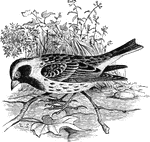
Lapland Longspur
"Centrophanes lapponicus. Lapland Longspur. Whole head, throat and breast jet-black, bordered with buffy…

Loon
The loon is a diving bird that finds its food under the water. It will dip its bill into the water and…

Loon
The loon is a diving bird. Its peculiar cry, sometimes resembling a hysterical laugh, has given rise…

Common Loon
"Colymbus torquatus. Common Loon. Great Northern Diver. Adult: Bill black, the tip and cutting edges…
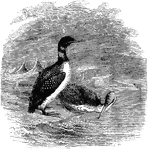
Loons
"Colymbus torquatus. Common Loon. Great Northern Diver. Adult: Bill black, the tip and cutting edges…
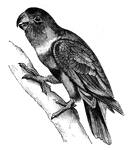
Lory
The Lory is a climbing bird distinguished by the fact that the feet have four toes each, of which two…

Love birds
Love birds are the smallest of this group; their plumage varies in shades according to the climates.…

Love Birds
"Agapornis- A genus of small African parrots, including the love-birds, sometimes made the type of a…
